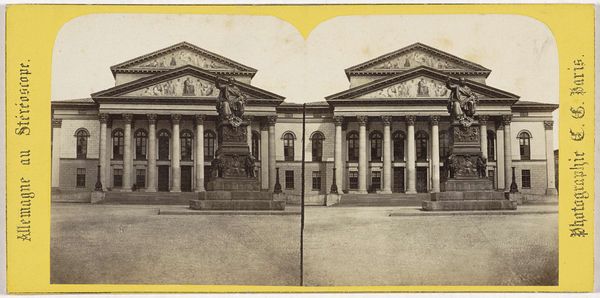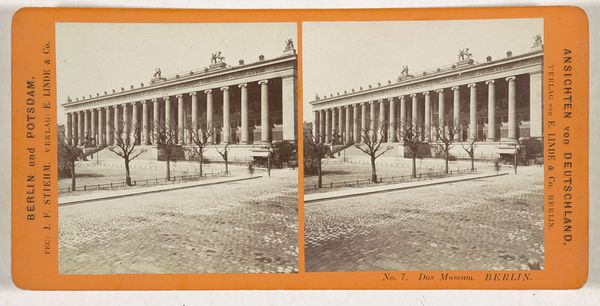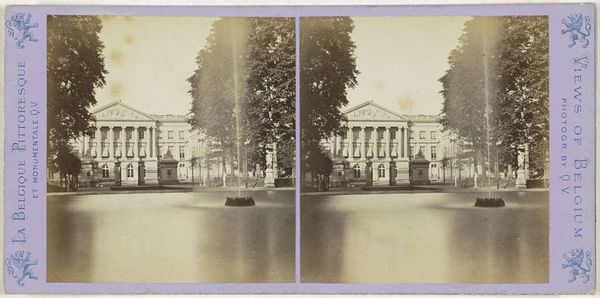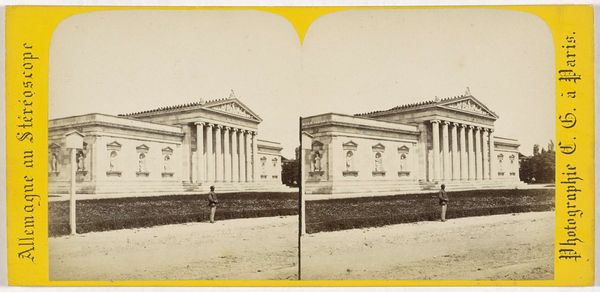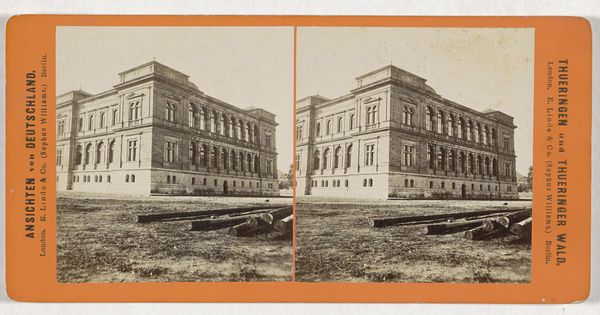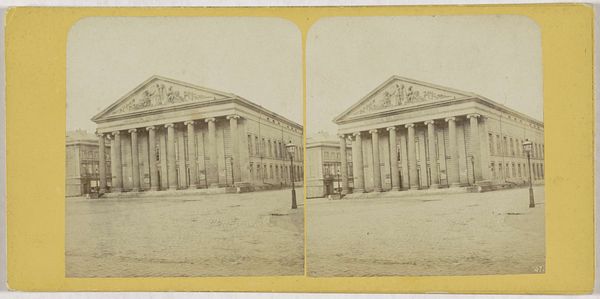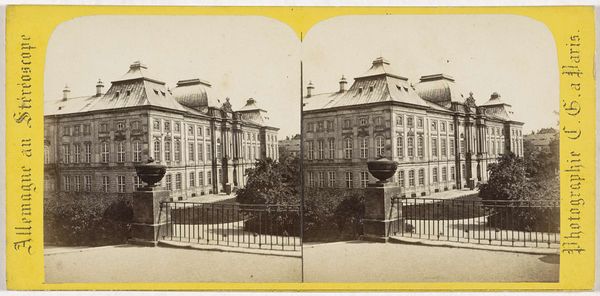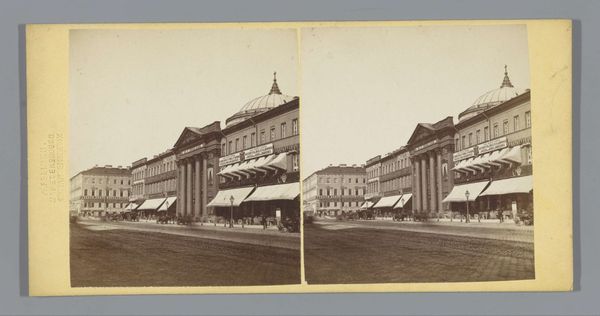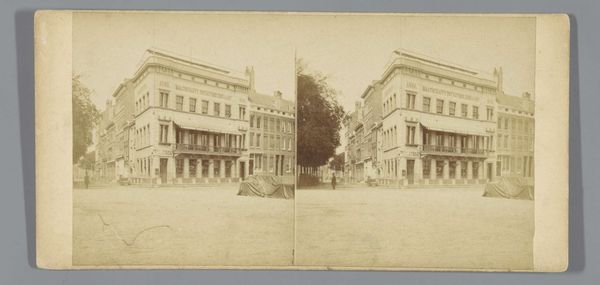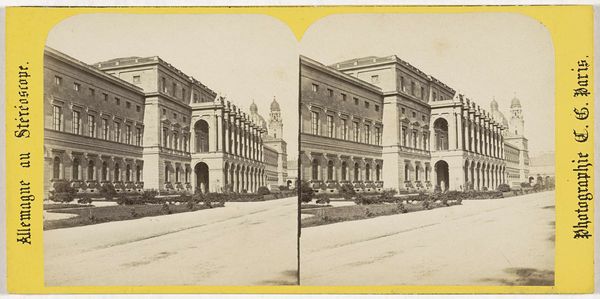
Dimensions: height 85 mm, width 177 mm
Copyright: Rijks Museum: Open Domain
Curator: This is Hippolyte Jouvin's "Residenzschloss in Koblenz, Duitsland," created in 1864, a fascinating albumen print. Editor: The sepia tones lend such a stillness to the scene. It almost feels suspended in time. Is it the subdued light? Curator: Undoubtedly. Observe the play of light and shadow across the neoclassical façade. Jouvin masterfully captures the inherent grandeur of the architecture, especially how the rhythm of the columns structures our perception. The photograph emphasizes line, form, and proportion. Editor: I see what you mean. But it's the production of these prints, this highly reproducible medium that strikes me. Think of the laborers involved, preparing the albumen from egg whites to coat the paper, sensitizing it, developing it... A whole industry facilitating the consumption of these views. Curator: Precisely, a system for circulating images! We shouldn't underestimate how Jouvin manipulated the technical constraints. Consider his positioning. From slightly afar, he captures both the monumentality and manages the visual field; we appreciate its architectural intent. Editor: Still, consider the choice of the albumen print—the means by which Jouvin communicates the image. It speaks volumes about its value as commodity, circulating within an expanding market of visual documentation. A physical object tied directly to an extractive process. Curator: The neoclassical style itself evokes a conscious return to an ideal. What would you say that reveals about Germany at the time? Editor: Hmm... Maybe the German states desire the perceived order in classical aesthetics reflected their contemporary pursuit of consolidating authority and national identity through construction. It's as if those aesthetics mask the physical costs required. Curator: An intriguing insight! Focusing on form alongside context, each element offers new insights, reflecting and shaping, as it was created, the values embedded in culture. Editor: Absolutely, seeing not just the image but its means and social life, shifts the way we appreciate photography then, as now. It prompts reflections on power dynamics within photographic economies and industrialization.
Comments
No comments
Be the first to comment and join the conversation on the ultimate creative platform.

